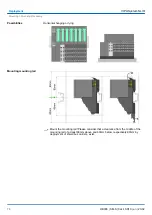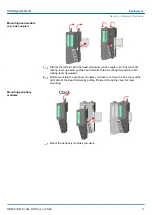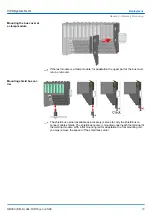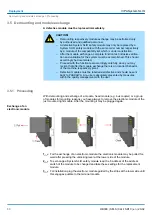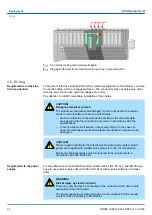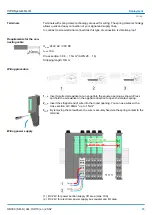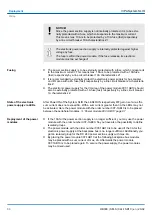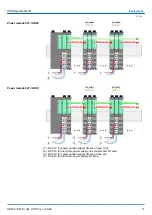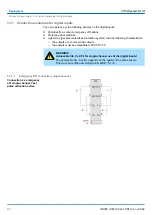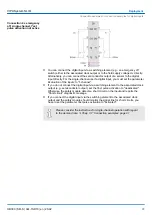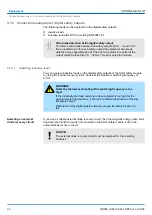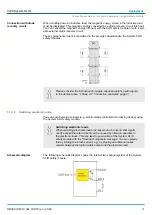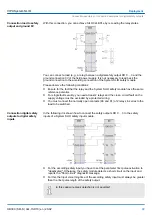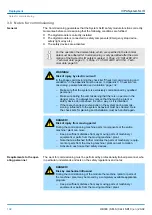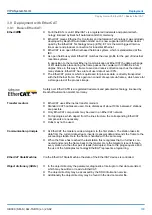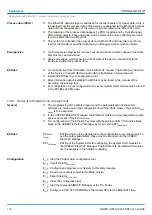
The safety-related output modules perform a cyclic test of the outputs. The F module
briefly disables the activate outputs. This test pulse lengths can be parametrized to match
the load current and the cable capacitance / length.
In the table below you will find orientation values for the
test pulse length
:
Load current
Cable length (capacity, resistor)
Test pulse
length to be
configured
2 mA
100 m (30 nF, up to 6.7 Ohm)
2500 µs
2 mA
333 m (100 nF, up to 22.4 Ohm)
3500 µs
2 mA
1000 m (300 nF, up to 67 Ohm)
6000 µs
5 mA
100 m (30 nF, up to 6.7 Ohm)
2000 µs
5 mA
333 m (100 nF, up to 22.4 Ohm)
2500 µs
5 mA
1000 m (300 nF, up to 67 Ohm)
4000 µs
> 25 mA
100 m (30 nF, up to 6.7 Ohm)
1000 µs
> 25 mA
333 m (100 nF, up to 22.4 Ohm)
1000 µs
> 25 mA
1000 m (300 nF, up to 67 Ohm)
1500 µs
High-speed actuators may briefly drop out or be activated during this test. If your process
does not tolerate this action you must use actuators with a sufficient lag (> 1 ms).
CAUTION!
The outputs of a fail-safe output module must be electrically isolated to
EN 50178 from components which carry higher voltages if the actuators
are operated at voltages higher than 24 V DC, for example, at 230 V DC,
or are being used to switch higher voltages.
safety-related control system’ page 66
Relays and contactors usually comply with this rule, is to be proved sepa-
rately. This aspect is of particular importance when using semiconductor
switchgear.
These components must be considered in the security calculation like the
SLIO safety modules.
Requirements to the
actuators
VIPA System SLIO
Deployment
Wiring > Requirements to the sensor and actuators
HB300 | SM-S | 02x-1SD10 | en | 20-02
90

